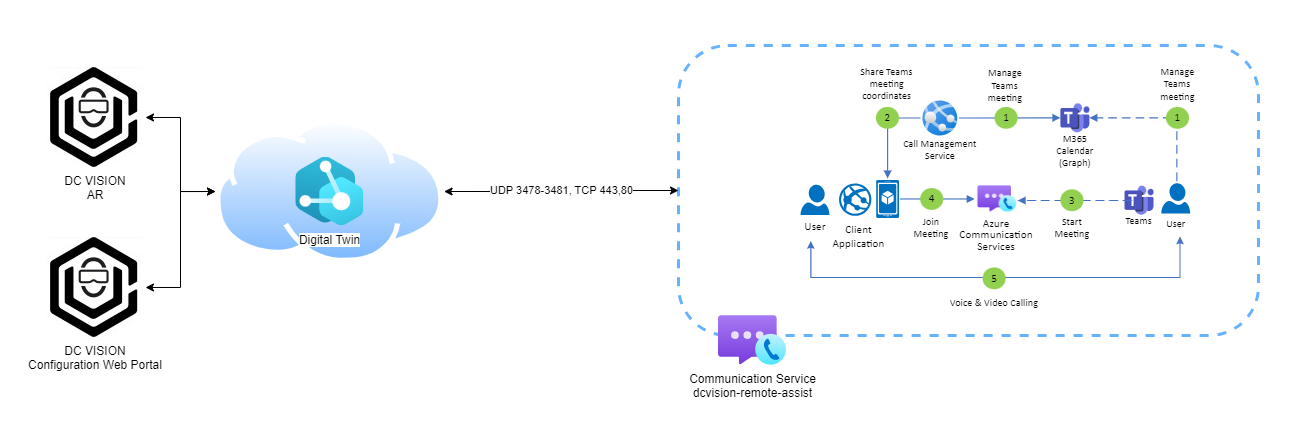Remote assistance & training
Real-time support and efficient training are critical for field technicians to perform optimally and ensure knowledge transfer in today's complex operating environments. DC Vision — based on digital twin technology enriched with augmented reality and seamless integration capabilities — is becoming a crucial tool for remote support and training junior technicians. The software integrates remote connections via collaboration systems such as Microsoft Teams or Webex, so that field sales can work together with experienced team members or experts in the software. DC Vision simplifies collaboration immensely, making it possible to solve problems immediately and transfer that knowledge. This use case highlights how the DC Vision remote assistance and training features effectively increase operational efficiency and training for operators of data centers/colocation/edge/server rooms/IDFs/MDFs with many hardware components.
Initial state
- A company operates a data center/colocation/edge/server rooms/IDFs/MDFs with a variety of IT hardware. Field staff, especially junior or new staff, often encounter technical challenges and need expert assistance or training.
- Traditional training process and the search for remote support are time-consuming and often lack the visual context that would be necessary to solve the problem and learn.
Requirements
- Enable real-time remote support and training for field technicians
- Simplify the process of contacting experts and experienced technicians for remote support and training
- Provide a visual impression of the situation on site so that remote experts and experienced technicians can give precise instructions and training
Solution with DC Vision

Integration with communication platforms
- DC Vision integrates communication platforms such as Microsoft Teams or Webex. With one click, a remote connection between field service and expert can be established.
- The simple user interface allows field staff to submit a support or training request without much effort, connecting them to the operational center for real-time assistance and learning.
Use of augmented reality (AR)
- Once the connection has been established, the AR technology within DC Vision overlays the current situation on site for the remote experts and experienced technicians.
- Remote experts and experienced technicians can visualize the scenario, make comments and provide assistance through the AR overlay to help the on-site staff overcome the technical challenge. making it easier to get started.
Digital twin technology
- Mapping the environment in a digital twin allows remote experts and experienced technicians to virtually navigate the environment and better understand the context.
- The virtual replica provides an additional layer of visual information, enabling precise guidance, collaborative problem solving and effective training.
Real-time collaboration and training
- The integration makes it easy to share video, audio, and data in real time between field service and experts.
- The collaborative environment created by DC Vision ensures that field service teams receive accurate and immediate support for problem solving and training under the supervision of experienced technicians.
Benefits
- Significantly reduced problem resolution time due to real-time remote support.
- Accelerated training process for junior and new technicians under the supervision of experienced colleagues.
- Increased accuracy in problem solving and better operational efficiency.
In summary
DC Vision by DC Smarter is revolutionizing the way companies approach on-site technical challenges and how they deliver training. By seamlessly integrating with collaboration platforms and leveraging AR and digital twins, DC Vision creates an environment for real-time visual collaboration and training. This not only speeds up the problem solving and training process, but also increases the accuracy and efficiency of support and training. The ability to visually navigate, collaboratively address issues, and expedite the training of new technicians – no matter where the experts are located – signifies a milestone on the way towards achieving operational excellence and a robust support and training structure.
